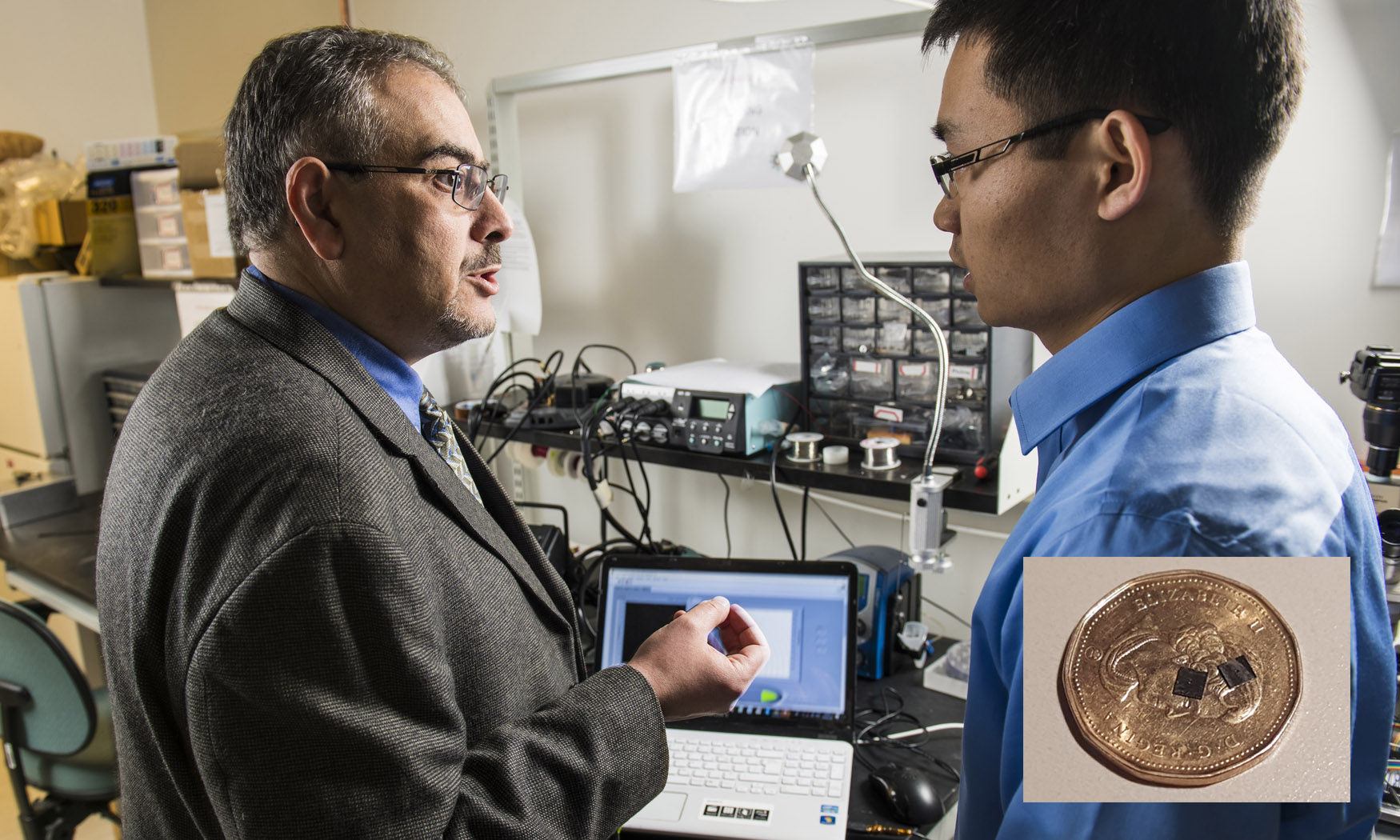For all their many advantages, today’s touchscreens perform poorly when used for the seemingly simple task of writing. “It’s like the pen or stylus is skating, because the screen can’t give you the feedback of friction, which guides you when you’re writing on a piece of paper,” explains Walied Moussa, Professor of Mechanical Engineering at University of Alberta.
A specialist in micro- and nanosensors, Professor Moussa has spent nearly two decades exploring how the mechanics of force on surfaces can be used to sense and deliver feedback. His work has led to the development of novel, 3D stress and force sensors with broad applications, from monitoring the integrity of infrastructure, to tracking the performance of biomedical implants in humans.
Recently this work achieved a major milestone with his development of a sensor array for touchscreens capable of measuring the full range of forces applied by the finger or stylus to the screen – from simple on-off touching, to free-form sliding motions. “Most touchscreens can sense the pressing forces, but few devices can sense the pushing forces of friction,” Moussa says.
“This information is important because it can improve the functionality of touchscreens to be responsive to real touch, rather than the all-or-nothing capabilities of one-D. Each of our sensors acts as a complete 3D force cell. It can measure forces down to micro-Newtons on x, y, and z (or diagonal) axes, very accurately.”
This breakthrough, which Moussa calls “Real Touch,” is important as tablets reshape classroom learning in schools. “Students don’t like using tablets to write because they can’t get the tactile feedback they need to guide their handwriting,” he says. “Real Touch overcomes that feedback gap.”
But 3D touch is about more than being able to write realistically on a computer, says Moussa. “It opens the window to many other applications, including flexible technologies, wearables, and 3D printed materials.”
His progression to 3D touch technology began more than 15 years ago, when one of his PhD students developed an implantable force cell in a MEMS sensor used to monitor the load effects of spinal surgery for scoliosis, or curvature of the spine. “The device was extremely sensitive to very low forces, to the point where it could also be used for touch surfaces. Back then, touch wasn’t a big thing,” Moussa recalls.
But as opportunities for touch technologies grew, his team continued to advance the technology, and their device soon proved to be very efficient for these uses. The technology is now patented and licensed to NEMSOR, a University of Alberta spinoff company, which develops 3D force and stress sensors for a variety of applications. “We created a nucleus for building all kinds of sensors,” he says.
Future applications that excite him include prosthetic and rehabilitative technologies. Facial reconstruction, such as rebuilding the jaw, could be augmented with embedded 3D sensors that provide force feedback on jaw movements, helping individuals rebuild control over essential skills such as biting. Sensor-embedded prosthetic limbs would similarly signal neurons that control movement.
“We created a nucleus for building all kinds of sensors”.
His technology offers many advantages that make it commercially viable. Its force sensors are tiny – two mm by two mm, compared to the 2X2-inch dimensions of commercial sensors – and can be manufactured using bulk microfabrication techniques. And because the sensors are piezoresistive, they are low-energy. These value-adds can dramatically lower manufacturing costs.
Key to the technology’s success has been packaging, Moussa says. “It’s not just the sensors, it’s how you put them in the device. That’s often the bottleneck – if you can’t package it, you can’t take it out of the lab.”
He credits CMC for assisting him in his R&D. “They gave us a lot of support, in training and in funding, that enabled us to do a lot of iterations over a number of years to come up with our solution for 3D touch. And the training has enabled my students to find jobs in a broad range of industries.”
Photo: Mike Ridgewood/Photo Features
May 2018

